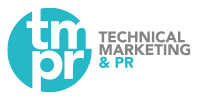The TMPR Guide to Strong Media Relations
The new media revolution has placed more of an emphasis on digital PR in recent years, however, that’s not to say that traditional media relations is less important. Whether your news is good or bad, having a solid relationship with your core media can really make a difference. Here is TMPR’s guide to strong media relations…
Build relationships
Good media relations is strategic and planned. It should form the spine of any PR campaign, particularly in the early stages. By building robust relationships with your core media early you make it easier to generate quality coverage moving forward.
Face-to-face meetings are by far the best way to start building a relationship with journalists and commentators. This does mean that you should allow time in your diary to get out there and meet them. You can also invite them to your trade shows and exhibitions or to visit your own site when you have new developments or something interesting going on.
Remember that journalists and bloggers speak to lots of people and organisations everyday so make sure you have a quality press pack to leave with them. This will give journalists something to reference in the future and will make your organisation stand out.
Know your audience
Make sure you are aware of the types of topics your target journalists are interested in and have a good understanding of their recent work. Also, use your PR team to find out how your target journalists like to work and what their deadlines and press days are. Journalists work under a lot of pressure and disturbing them when their publication goes to print in a couple of hours is not a good way to build a positive relationship.
Deliver on your promises
If you are set a deadline by a journalist make sure you hit it. These deadlines are based on when publications go to print and if editors miss their deadline because you failed to send them your article in time – don’t expect to get another opportunity with that publication anytime soon.
Be available
Make yourself available and useful. Once a journalist or editor knows you are a good source of comment or insight for their publication they are more likely to seek you out for future content. Make yourself available to speak with them whenever you can.
Download the ‘TMPR Guide to Strong Media Relations’ here.
